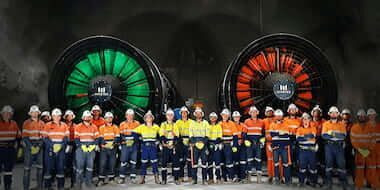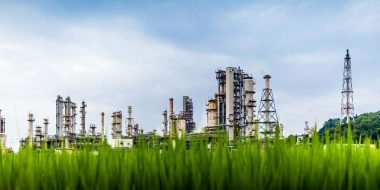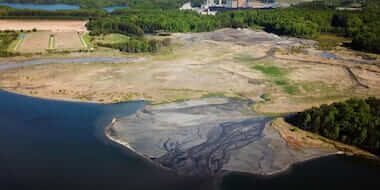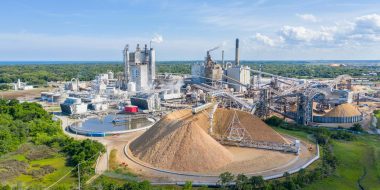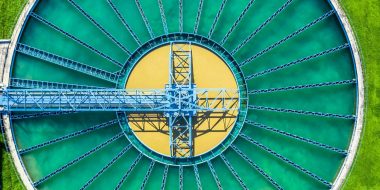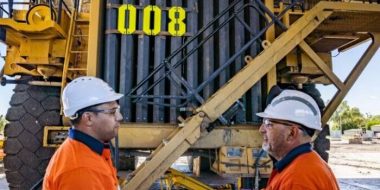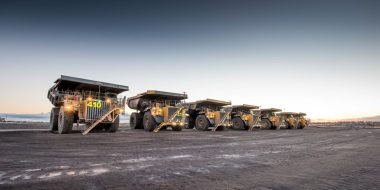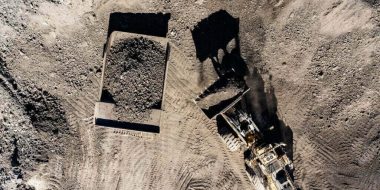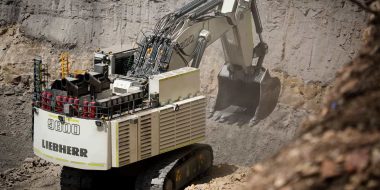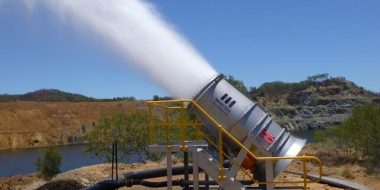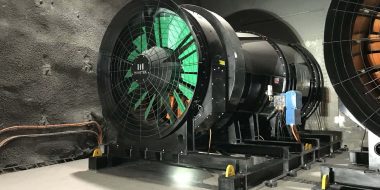Water is essential in most mining processes with responsible water use a critical issue for the mining industry. When excavating coal, metal ores, or other minerals, rocks and minerals that contain sulphur may be exposed to water and oxygen. This water holds highly polluting substances such as lead, zinc, iron, mercury, and cadmium. Acid or wastewater is often stored in a Tailings Storage Facility (TSF), as it has the potential to poison downstream waters and destroy already fragile ecosystems.
With meteorologists predicting a rare triple La Nina forecast for 2022/23, managing acid or wastewater both on active and abandoned mine sites is now more important than ever [1]. For industries located in the Southern Hemisphere that use water and tailings dams, more rainfall and flooding pose a serious threat. If your dam or tailings facility is already close to its limits, get prepared ahead of time before the next heavy deluge hits. The recent Jasgersfontein disaster in South Africa serves as a reminder to effectively manage dams and TSF both in operational and legacy sites.
Conventional treatments of acid water include various physicochemical methods, which involve excessive use of chemicals and capital. Water evaporation has emerged as an efficient, cost-effective, and eco-friendly alternative for the remediation of abandoned or closed mines.
It’s estimated that there are over 32,000 tailings dams located across operational and legacy mine sites throughout the world [1]. Organisations such as World Mine Tailings Failures call attention to threats and risks of poorly managed and designed TSFs. Abandoned mines and TSF failures can leach harmful toxins into the soil and water, polluting the environment and posing a risk to human health. Fortunately, there are steps that can be taken to remediate abandoned mines and make them safe.

What is mine remediation?
Mine remediation is the process of removing contaminants from tailings dams and repairing the damage caused by mining operations. It is a crucial step in protecting the environment from the harmful effects of mining. There are a few different techniques that can be used for mine remediation, including soil stabilization, revegetation, and decontamination.
Soil stabilisation involves adding stabilising agents to the soil to prevent wind and water erosion. Revegetation can be achieved by planting vegetation on mined land to help hold the soil in place and prevent erosion. Decontamination involves treating the contaminated soil with chemicals or other agents to remove contaminants. Mine remediation is a complex and expensive process, but it is essential for protecting the environment from the harmful effects of mining.
What is the difference between mine remediation and mine rehabilitation?
There are two main approaches to dealing with abandoned mines: mine remediation and mine rehabilitation. Mine remediation is the process of making a site safe for human habitation or use. This typically involves removing hazardous materials, stabilising structures, and capping mine shafts. Mine rehabilitation, on the other hand, is the process of restoring a site to its pre-mining condition.

What is mine rehabilitation?
Rehabilitation is a critical aspect in the life of mine.
Mine rehabilitation is the design and construction of landforms as well as establishment for sustainable ecosystems or alternative vegetation, depending upon desired post-operation use [3].
Before the commencement of any mining operation, companies work with government authorities to develop comprehensive rehabilitation plans. This plan will decide the post-mining use of the land and include goals to return the resulting landform to a safe and stable condition.
The demand and push for sustainable mining practices has lead to an increased focus on mine remediation in recent years. According to world market research, environmental remediation is forecasted to increase at a CAGR (compound annual growth rate) of 7.5% is estimated to reach $152 billion by 2025 [4].
Mine remediation projects may include the following:
- Treatment or removal of soil, sediments, groundwater, or surface water
- The demolition and removal of unused infrastructure
- The upgrading of dams to protect against tailings spills
- Dewatering of tailings dams by evaporating contaminated water
- Engineered soil coverings for tailings ponds and waste rock piles
- Water treatment system upgrades to keep contaminated water out of the local watersheds
While effective and sustainable groundwater management of this toxic outflow is traditionally expensive, it is critical during any mineral processing application. Mining companies can either treat or evaporate contaminated water to protect human health and the environment.

How can enhanced evaporation assist with mine remediation?
Enhanced water evaporation is a natural process that converts water from liquid to vapor. Evaporation can occur naturally in solar evaporation ponds, however it is a slow process and requires a vast land mass. The cost of completing added storage ponds along with the clean-up and revegetation are often prohibitive.
Enhanced water evaporation is another approach to remove water from surfaces, dams, and tailing storage facilities. This is helps to prevent corrosion or the dispersion of harmful metals and chemicals into the environment
Minetek’s evaporation systems discharges water through a unique and patented water fracturing nozzle. This nozzle is engineered to achieve the correct water molecule size by fracturing to maximize performance via droplet reduction and direct water fragmentation. This water is injected into a high volume/high-velocity air stream and is propelled into the atmosphere, enhancing hang time and exposure to external- ambient elements. Replenishing ambient air via a high-performance vane blower unit within the evaporator, draws air from fresh ambient surroundings and achieves the highest possible evaporation.
Our evaporation units can process water with elevated levels of Total Dissolvable Solids (TDS) and Total Suspended Solids (TSS) and pH range as low as 1.8 and as high as 14. Offering a versatile and a cost-effective solution to managing waste water.

What are the benefits of mechanical water evaporators?
Mechanical water evaporation units offer a range of benefits in comparison to solar evaporation ponds.
- This natural process does not require chemical pre-treatment
- It’s an efficient solution for removing surface water
- Supplies significant CAPEX savings
- No waste stream or operator is needed for use
- Rapid deployment of evaporation systems
- Minimal maintenance
- Not susceptible to changes in water feed quality
- Minimal footprint and power needed
- Mobile and robust evaporation systems, with a portable skid option.
Mine remediation is a critical process in sustainable mining practices. Minetek’s water evaporators offer a cost-effective and efficient solution for managing contaminated water.
Learn more about Minetek’s enhanced water evaporation units & our recent successes by reading this water management case study. Discover how you can save millions of dollars in water treatment costs by leaving your details below.
References
- Bureau of Meteorology – http://www.bom.gov.au
- World Mine Tailings Failures – https://worldminetailingsfailures.org
- Australian Government – https://www.industry.gov.au
- Facts and Factors – https://www.fnfresearch.com/news/global-environmental-remediation-market-revenue-projected-around-164

